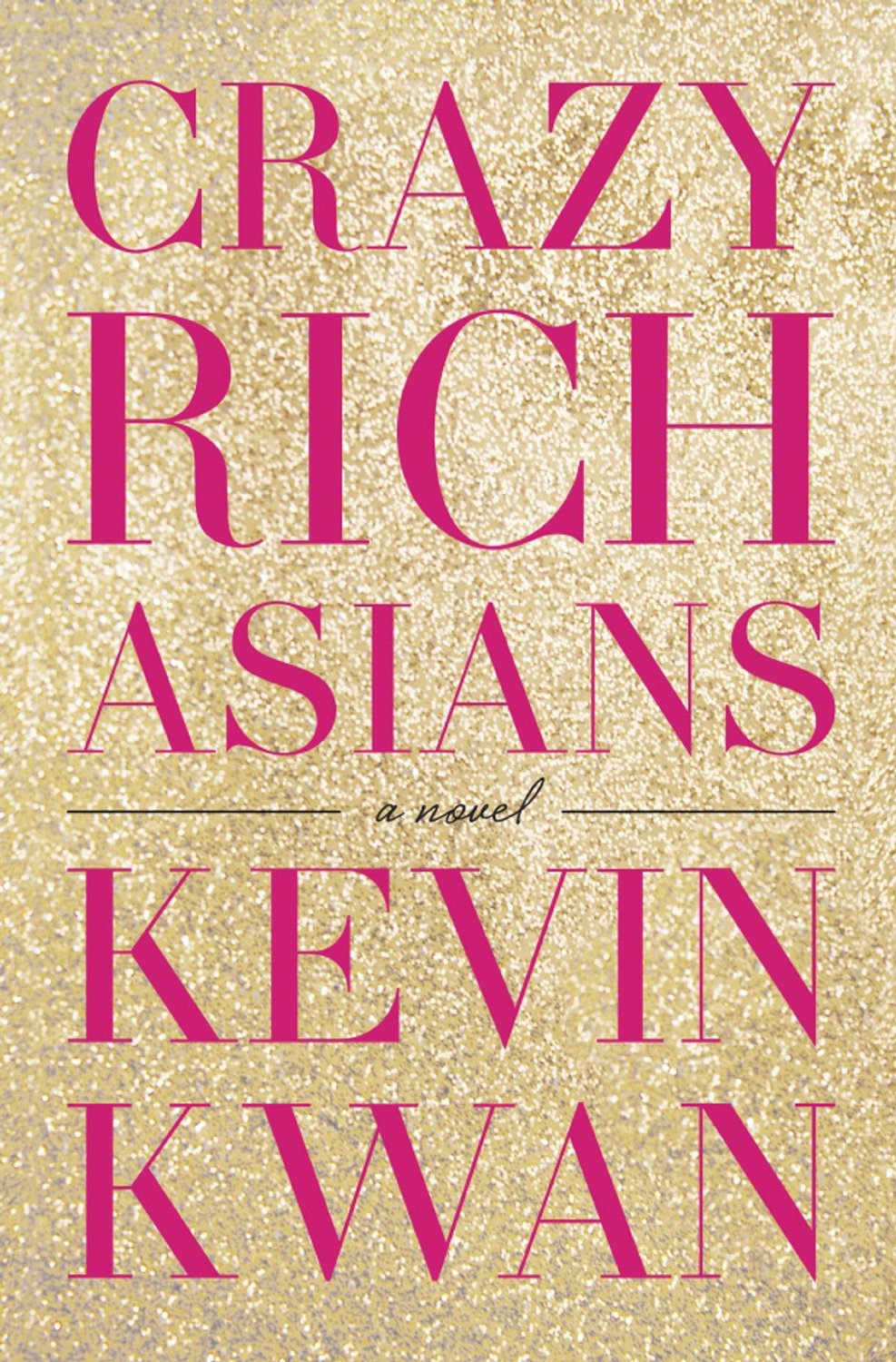At first glance Crazy Rich Asians, Kevin Kwan’s addictive and funny debut novel, with its tacky gold glitter cover and bright pink lettering, brings to mind the recent images of throngs of New Money Chinese tourists making their way to Hermes, Louis Vuitton, Chanel, the lines becoming so frenzied that some of the stores have created controversial lines for Asians only. Kwan’s book, however, focuses a whole other level of the “Crazy Rich Asian” (CRA).
Rachel Chu is an outsider. She is a middle class Asian-American college educated woman, who just happens to be dating Nicholas Young. What? You don’t know who he is? Alamak! (The Singaporean equivalent of oy vey!) Nicholas is one of the last remaining bachelors of the Young clan, whose family tree dates back to the parents of Nicholas’ grandmother Shang Su-yi Young (think a Chinese Dowager countess). These CRA’s pre-date those new shoppers flocking to Paris for the latest designer goods—they have been shopping at the couture ateliers since the 1970’s.
So you can imagine the shock/gasp/horror that befalls the elite female community of Singapore when Rachel Chu of Northern California (don’t make the same mistake as Nicholas’s mother Eleanor Young when she confuses her with the Chu family of plastic wealth from Taiwan) whose family comes from—god forbid!—Mainland China, accompanies Nicholas for a summer visit to Singapore. Their visit coincides with the elaborate nuptials of Colin Khoo, another major bachelor of a similar fortune and Nicholas’s best friend, to fellow CRA Araminta Lee (she of supermodel features and a hotel magnate mother).
Kwan knows these families and their idiosyncrasies, because he came from a similar upbringing in his own old money Singaporean family. This world of Kwan’s was just as new to me as it was to the book’s Rachel Chu. Having grown up in the States myself, with family who originally emigrated from the—gasp!—Mainland, I found myself enjoying Kwan’s tales. At the heart of it, I could still relate to the crazy cheap aunties who make you walk ten blocks in the rain to save cab money, the love of food that runs so deep (like the Singaporeans in the novel, I too spend every minute of my day planning every bite) and most especially no matter how much money you have, your crazy rich Chinese mother is actually also still crazy-crazy.
Kwan gives readers a glimpse into the rarified .001%, creating a crazy fun summer read. For the same people who look to Downton Abbey to relive the long gone world where women read their ironed newspapers during breakfast served on silver trays, Crazy Rich Asians offers a peek into the lives of people who have climate-controlled closets according to material (70°F for leather, 55°F for Italian cashmere and fur), who buy a hotel when the staff gives them trouble, and where bachelorette parties are held on privately owned islands. Alamak!![]()
